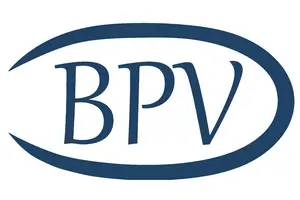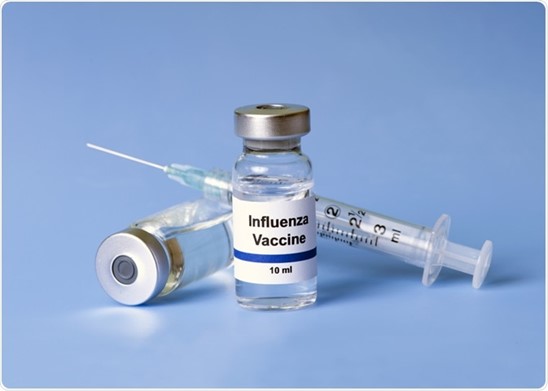Achieving quality assurance in influenza vaccine production through comprehensive validation and regulatory compliance
Timely production and distribution of influenza vaccines in advance of each flu season is contingent upon rigorous regulatory compliance and comprehensive validation of manufacturing procedures, apparatus, and quality control systems. In the context of producing flu vaccines, validation is the methodical and documented confirmation that instruments, processes, and systems consistently yield vaccines that meet specified requirements and quality standards.
It takes many steps to make an influenza vaccine, including virus selection, virus propagation, purification, formulation, filling, and quality control. To guarantee that the final vaccine product is secure, reliable, and consistent, each of these steps needs to be validated.
Sterilisation and in some cases, depyrogenation validation is essential to prevent viable and non-viable particle contamination, which could have extremely detrimental effects. Strict testing and validation are essential steps within the pharmaceutical and medical device industry, especially when related to injectable treatments
Equipment, process and Systems Validation
Validation of the equipment used during the equipment preparation and manufacturing of influenza vaccines is an essential step. Equipment used in the processes followed to manufacture vaccines will usually include incubators, autoclaves, filling lines, and freezers. Validation is necessary to guarantee that the tools and equipment used in various manufacturing processes perform correctly and in line with the strict regulatory requirements. Effective cleaning, precision, sterility, dependability, integrity, and maintenance requirements are assessed for every piece of equipment or instrument through comprehensive operational and performance qualification (OP and PQ) protocols. This is followed by routine requalification at regularly defined intervals to ensure consistent continued operation.
A piece of equipment that is not working properly or has not been properly validated can result in contaminated or inconsistent vaccine quality, production halts, significant monetary losses, and potential threats to the safety of the end user. Equipment validation is critical to vaccine manufacturing because it lowers contamination risks, maintains product quality, and ensures product safety.
Validation of the Process
Extensive process validation protocols and data collection demonstrate each manufacturing step’s ability to consistently deliver a product that meets specifications, starting with the generation of viral seeds and continuing through harvesting, purification, formulation, and final sterile filling. This is especially significant when the product has a short shelf life. Critical parameters like pH, temperature, purity, and yield are continuously monitored and evaluated in the production process to ensure that they remain within validated ranges and to prevent quality problems. Any deviations can be quickly found and corrected.
Below are examples of validation processes that are critical to the safety of vaccine production:
Cleaning Validation – provides documented evidence that a system or device can be consistently cleaned to specified and acceptable limits. The objectives of good manufacturing practice (GMP) include the prevention of contamination and cross-contamination of drug-starting materials and products.
CIP – Clean in Place uses chemicals, heated water, and agents to ensure that equipment is free of contaminants that could interfere with the manufactured product. In the pharmaceutical industry, it is extremely important to clean pipes, containers, and equipment with purified water or water for injection. SIP uses hot steam to clean medical machine parts without disassembly, extending CIP. It is an effective cleaning process for sensitive medical equipment.
SIP – Steam in Place uses dry saturated steam to reduce the bio-burden of equipment and/or medical machine parts without disassembly, in the case of sterilisation, aiming to achieve a greater than 6-log reduction in all product contact locations. It is an effective sterilisation process which is essential for removing viable contaminants.
Steps involved in process validation
Process Design
The manufacturer establishes the critical process parameters and their acceptable ranges during this phase. The conditions for viral propagation, formulation, and purification are all factors that must be determined. The objective is to develop a method that can consistently produce vaccines according to predetermined guidelines.
Process Qualification
The goal of the process qualification stage is to show that the manufacturing process consistently adheres to predetermined guidelines. It involves training personnel, simulating processes, and testing and evaluating the effectiveness of the equipment. A successful process qualification phase is essential for vaccines to meet regulatory requirements.
Batch Consistency
Consistency between batches is a crucial aspect of vaccine production. To guarantee the safety and efficacy of vaccines, all equipment and procedures need to be validated to attain this consistency. Each batch of influenza vaccines must be consistent in terms of antigen content, purity, and safety during production. Even minor differences between batches can have a significant impact on patient safety and vaccine efficacy. Batch consistency in vaccine manufacturing depends on equipment and process validation. Validation lowers the possibility of batch failures and product recalls by assisting in the identification and mitigation of sources of variation.
Conformity with regulations
Strict adherence to current Good Manufacturing Practices (cGMP) and documentation provides greater assurance of quality. Following established protocols, employee education, environmental controls, and safety precautions help prevent contamination and errors. Continuous improvement is encouraged in all areas of vaccine production, testing, and distribution through internal quality audits, external regulatory inspections, and protocol reviews.
Conclusion
It is impossible to overstate the significance of process and equipment validation in the production of influenza vaccines. Validation is necessary to guarantee that vaccine products are reliable, consistent, and safe from batch to batch. Manufacturers also need to adhere to the stringent guidelines that regulatory bodies have established. As a result of increasing the validation of tools, procedures, and quality control systems as well as steadfastly adhering to regulatory requirements, influenza vaccine manufacturers can supply safe, consistently high-quality vaccines swiftly and reliably. The COVID pandemic has shown that a major investment in highly qualified personnel, infrastructure, state-of-the-art technologies, and automation is very beneficial for vaccine manufacturing, which is critical to public health.

